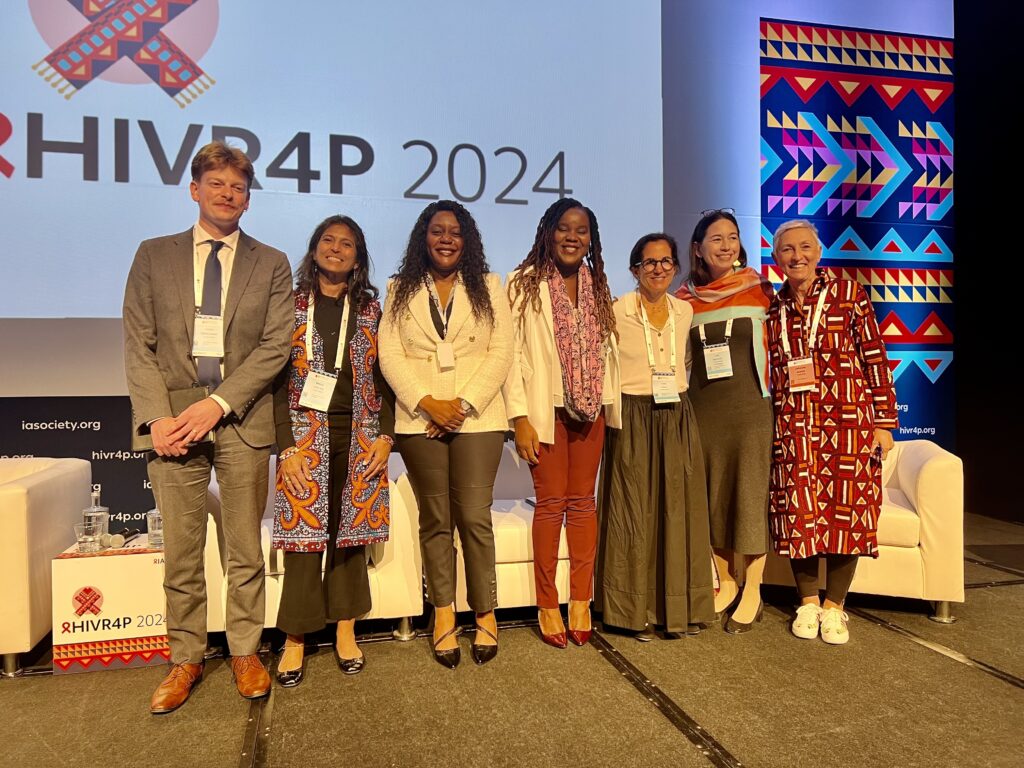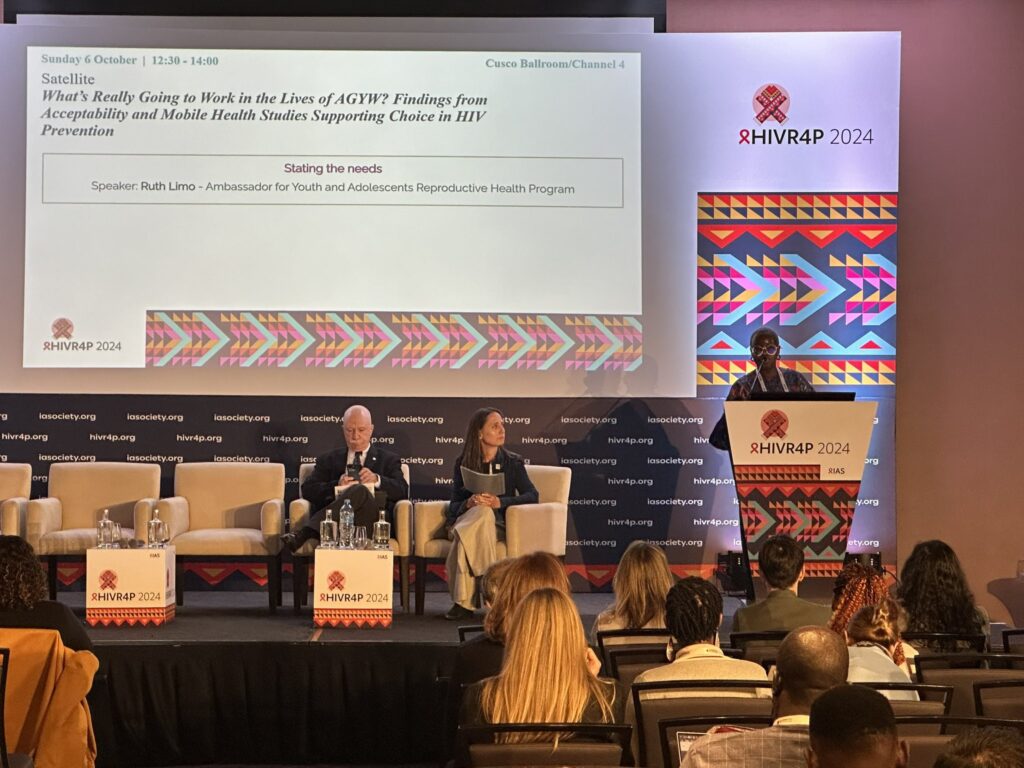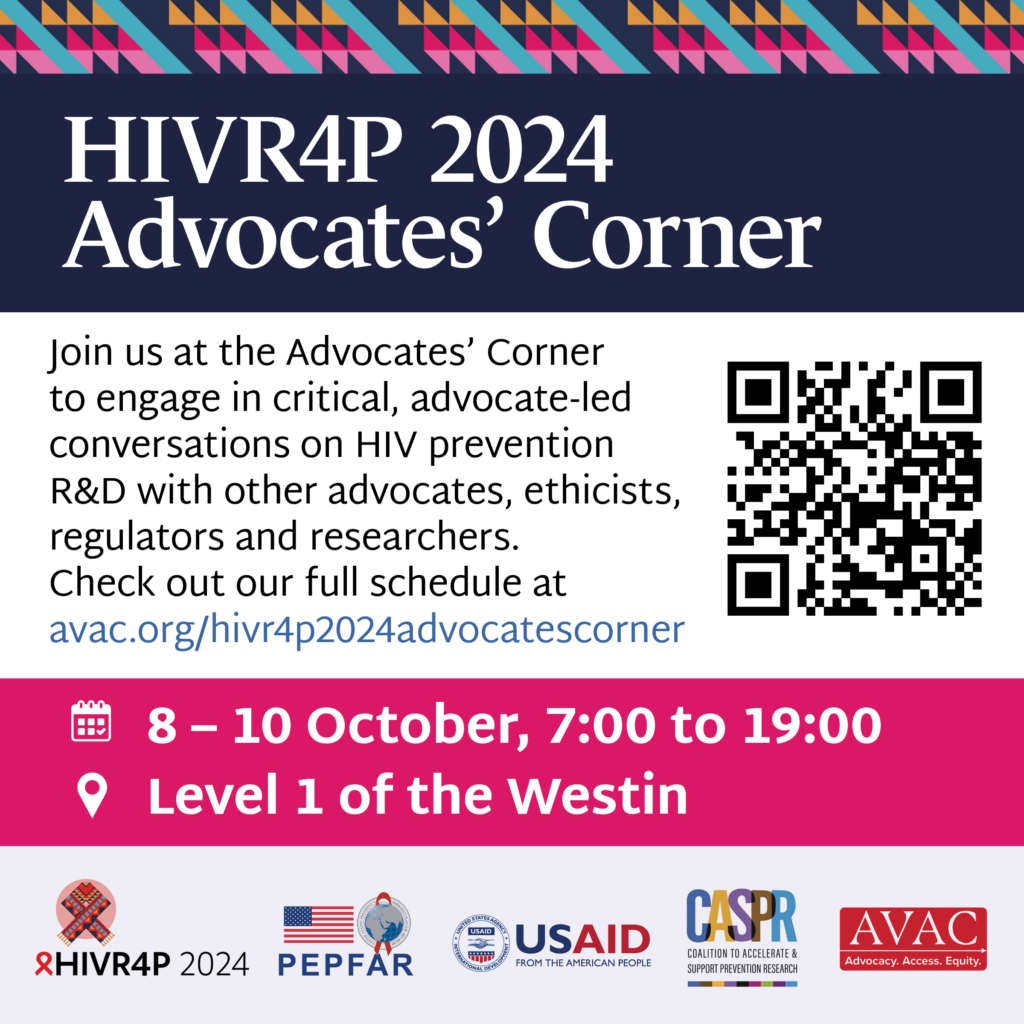October 8, 2024
The HIV Research for Prevention 2024 (R4P) conference in Lima, Peru began with a suite of satellites that put the HIV prevention pipeline in context and pulled out key priorities from upstream research to gaps in PrEP coverage today, to progress toward connecting excluded populations with an array of choices.
Read on for highlights!
Upstream Research
Key discussions in Lima focused on the promise of early phase research for next-generation HIV prevention, and priorities for future research. A satellite, Creating a Menu of Options: Early R&D of HIV prevention products for women, the MATRIX way showcased innovation such as a dapivirine vaginal film and on-demand options for vaginal or rectal use. Presenter Thesla Palanee-Phillips of Wits RHI emphasized that product success depends on providing options that fit into people’s lives. “Unless people use a product, they’re not going to take us anywhere.” Presenters talked about the importance of human-centered design to inform the research agenda, and Nyaradzo Mgodi from the University of Zimbabwe pointed to the need for dual prevention technologies that address both HIV and pregnancy.
All these discussions inform and advance the just launched People’s Research Agenda, a global initiative driven by communities and advocates to envision an inclusive HIV prevention pipeline and ensure the voices of those most affected by HIV are integrated into HIV prevention research and development.

PrEP in Latin America and the Caribbean
The satellite, Enhancing service providers’ engagement in PrEP delivery, uptake, and retention in Latin America & the Caribbean, featured data from the PrEPWatch PrEP tracker on Latin America and the Caribbean (LAC), and highlighted the region’s role in the lenacapavir PURPOSE 2 study that included sites from across South America. AVAC’s Catherine Verde Hashim, Kelika Konda of USC/Universidad Peruana Cayetano Heredia, Mayara Secco Torres da Silva of Fiocruz and Jared Baeten from Gilead discussed the ongoing challenge to reach young people in the region with PrEP services and the vital role that both industry and community partnerships play in closing the gaps.

Expanding Inclusion
Advocates, researchers and regulatory authorities each have unique contributions to ensure pregnant and lactating populations are included in research. Critical conversations between these stakeholders was the focus of the satellite, Catalyzing Progress in the Inclusion of Pregnant and Lactating People in HIV Prevention Research.
Renowned researcher and AVAC board member, Linda-Gail Bekker explored the historical exclusion of women from research, where outcomes from trials among men were wrongly assumed to apply to women. Advocates called for deep collaboration to close this gap and Bekker pointed to the ground broken by the PURPOSE 1 trial that included PLP and other populations who have historically been excluded from clinical trials. “This is now a benchmark—we must move forward, not back. The key is teamwork, collaboration, and amplifying voices.”

PrEP and Choice for Adolescent Girls and Young Women
Yes, Girls DO wanna have fun! But adolescent girls and young women (AGYW) also want to be in control of their sexual and reproductive health options. The presentations on the satellite session co-chaired by AVAC’s Director of Research Engagement, Stacey Hannah, What’s Really Going to Work in the Lives of AGYW? Innovations in Acceptability and Mobile Health Support Interventions for HIV Prevention, focused on choice for AGYW in HIV prevention. Presentations covered how AGYW respond to various PrEP options and tools for adherence, except long-acting injectable PrEP, which faces challenges in daily oral PrEP efficacy trials. Studies explored preferences between F/TAF and F/TDF, the vaginal ring’s role, the acceptability of injectables, and adherence tools. The key takeaway? There’s no one-size-fits-all solution—just like other groups, AGYW need different PrEP options tailored to their lives and circumstances.

Update on the Dual Prevention Pill
The Dual Prevention Pill (DPP) is our next big opportunity to expand the HIV prevention toolbox. But it’s not just about the product, it’s also the delivery of the product that makes the difference in the end. At a satellite on how best to deliver the DPP, Delivering on the promise: Defining optimal implementation strategies and service delivery packages for the Dual Prevention Pill, AVAC’s Kate Segal said the next product close to seeking regulatory approval will prevent both HIV and pregnancy and bring a much-desired product to young women. “Research found that the DPP was a tool that helped women navigate the unpredictability of life and supported them to take control of their sexual health,” said Segal. Users also resonated with messaging that celebrated their individuality, life goals, enjoyment and self care. Incorporating the DPP into adolescent youth services and busting myths about both PrEP and contraception are some of the considerations for delivering this option effectively. The DPP could reach the market as early as 2026.

Advocates Corner
Stay tuned for more from AVAC at HIVR4P 2024 and be sure to visit us in the Advocates’ Corner on Level 1 if you are in Lima. And join us for our daily virtual debriefs from 7:00–8:00 am PET to reflect on key discussions and ask questions. Register here.
